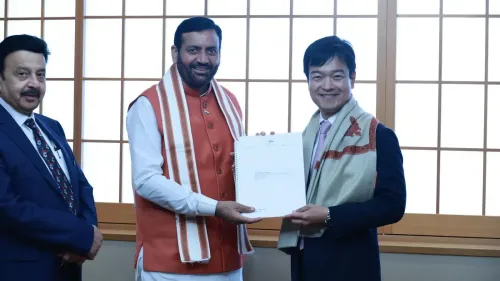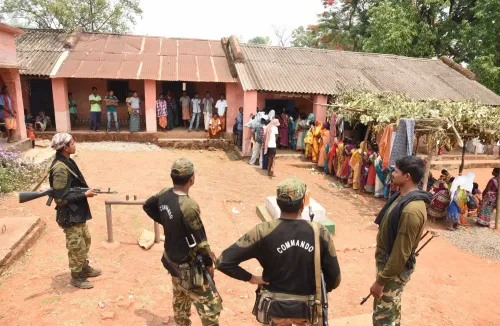What prompted four hardcore Maoists to surrender in Chhattisgarh's Kondagaon?

Synopsis
Key Takeaways
- Four hardcore Maoists surrendered in Kondagaon.
- The surrendered individuals had a combined bounty of Rs 22 lakh.
- The Chhattisgarh government’s rehabilitation policy played a key role.
- Immediate incentives of Rs 50,000 were provided to each surrendered cadre.
- This reflects a growing trend of Naxalites returning to normal life.
Raipur, Aug 20 (NationPress) In a remarkable advancement for Chhattisgarh's efforts against Naxalism, four hardcore Maoists, including a married couple, have surrendered to the Superintendent of Police in Kondagaon district.
In a statement to IANS, Y Akshay Kumar, the Superintendent of Police of Kondagaon, mentioned, "The individuals who surrendered had a combined bounty of Rs 22 lakh and were active in various insurgency-prone districts such as Bastar, Kanker, Dantewada, and Manpur Mohla."
Among the surrendered were 30-year-old Laxman Korram alias Junnu, who had an Rs 8 lakh reward on his head, and his wife 25-year-old Maddo alias Zarina, from Dhankapara in Bastar, who had a Rs 5 lakh bounty, as stated by the officer.
The other two individuals included 40-year-old Pandu Ram from Rae village in Kanker with a Rs 1 lakh reward and 30-year-old Sakharam from Chhote Odagaon in Kondagaon, also carrying a Rs 8 lakh bounty.
These four were implicated in grave offenses, such as assaults on security forces, civilian murders, arson, theft, and hindrance of public infrastructure. Their decision to surrender was reportedly influenced by the Chhattisgarh government's newly upgraded 'Naxalite Surrender, Victim Relief, and Rehabilitation Policy 2025', which provides financial rewards, skill development, and community reintegration assistance.
Each individual who surrendered received Rs 50,000 immediately under this policy, which aims to motivate insurgents to forsake violence and reintegrate into society.
Officials highlighted that the couple's choice was motivated by a wish for a serene family life and the attractiveness of the government’s rehabilitation program.
This surrender reflects a growing trend in the area, where numerous Naxalites have chosen to return to normal life in recent months.
The policy, initiated earlier this year, promises rehabilitation within 120 days and encompasses opportunities for education, employment, and protection for those who surrender.
Security forces and state authorities praised this development as a crucial step towards restoring peace and stability in the region.
The surrender in Kondagaon enhances the state's comprehensive strategy, which combines tactical operations with socio-economic rehabilitation to dismantle the Maoist network.









